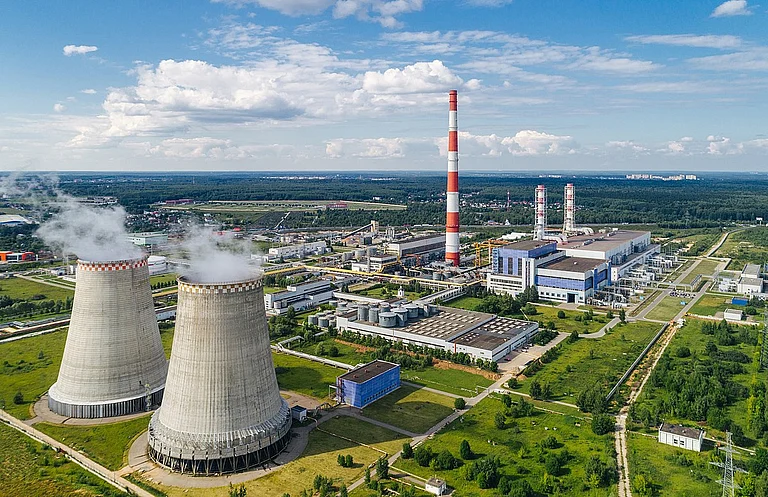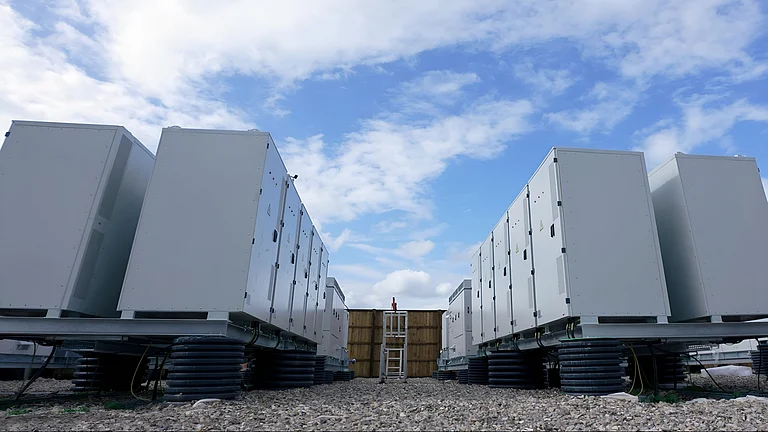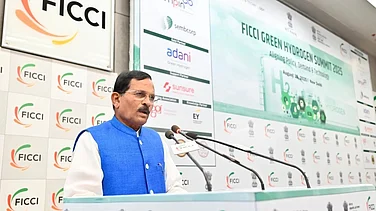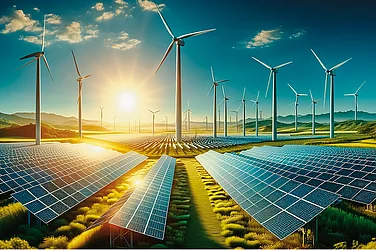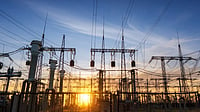
57 thermal power units have installed flue gas desulphurization systems to curb sulphur dioxide emissions.
Plants retiring before Dec 31, 2030 can skip SO₂ compliance if they formally commit to closure
3.78 crore smart meters have been installed nationwide under schemes like RDSS, enabling accurate, automated billing and reducing manual reading errors.
As many as 57 thermal power units have installed flue gas desulphurization (FGD) systems while others are in process to set up the technology, Parliament was informed on Monday.
FGD systems are installed at coal-fired plants to reduce sulphur sulphur dioxide (SO2) emissions from them, in line with environmental regulations.
In a written reply to Rajya Sabha, Minister of State for Power Shripad Naik said Ministry of Environment, Forest and Climate Change (MoEF&CC) notified emission standards, including SO2 for coal/lignite based thermal power plants vide its notification dated December 7, 2015.
The MoEF&CC vide a notification dated September 5, 2022 has categorized thermal power plants (TPPs) as Category-A, B and C for compliance of SO2 emission norms along with timelines for each category, Naik said.
"To meet the SO2 emission norms, FGD system is being installed in coal/lignite based TPPs. So far, a total of 57 FGD (i.e. 17 units in category-A, 4 Units in category B and 36 units in category C have been installed," the minister said.
On exemptions for installing FGD systems, Naik said MoEF&CC issued a notification on July 11, 2025 regarding applicability of SO2 emission standards for TPPs along with timelines post review of its 2015 notification by the central government.
The Centre had received various representations regarding exemption or relaxation in timelines of these standards due to limited availability of technology providers, its techno-economic feasibility, impact of COVID-19 pandemic on supply chain, price escalation due to high demand and low supplies, low SO2 concentration in ambient air and heavy burden on consumers due to increase in electricity price etc.
Besides, the scientific studies conducted by independent research institutions regarding effectiveness and rationale behind these standards and its role in overall ambient air pollution of the region were also considered to evaluate the need of universal applicability and enforcement of these standards.
In view of above, MoEF&CC issued a notification on July 11, 2025 regarding applicability of SO2 emission standards for TPPs along with timelines.
TPPs declared to retire before December 31, 2030 shall not be required to meet specified standards for SO2 emissions in case such plants submit an undertaking to Central Pollution Control Board and Central Electricity Authority for exemption on ground of retirement of such plant.
The existing and under commissioning Category A thermal power plants shall comply with SO2 emission standards by December 31, 2027. Other Category A plants to be commissioned after December 2027 will operate only after ensuring compliance of these standards.
For all category B plants or units, whether existing or upcoming, the applicability of SO2 emission standards, shall be decided by the Central Government based upon recommendations of the Expert Appraisal Committee in charge of thermal Power Projects as per the procedure laid in the notification dated July 11, 2025.
The SO2 emission standards shall not be applicable to all Category-C thermal power plants subject to compliance of stack height criteria notified by MoEF&CC on August 30, 1990 and timeline for compliance of stack height criteria is December 31, 2029.
As per official data, there are 191 TPPs having 600 units with 2,11,519.5 MW capacity under the three categories.
In a separate reply, the Minister said till date, a total of 3.78 crore smart meters have been installed under various schemes including the Revamped Distribution Sector Scheme (RDSS).
One of the primary advantages of smart meters is their ability to provide accurate billing information. Smart meters eliminate inaccuracies due to manual reading by automatically recording and communicating the consumption data to the billing system of distribution utility, he said.








